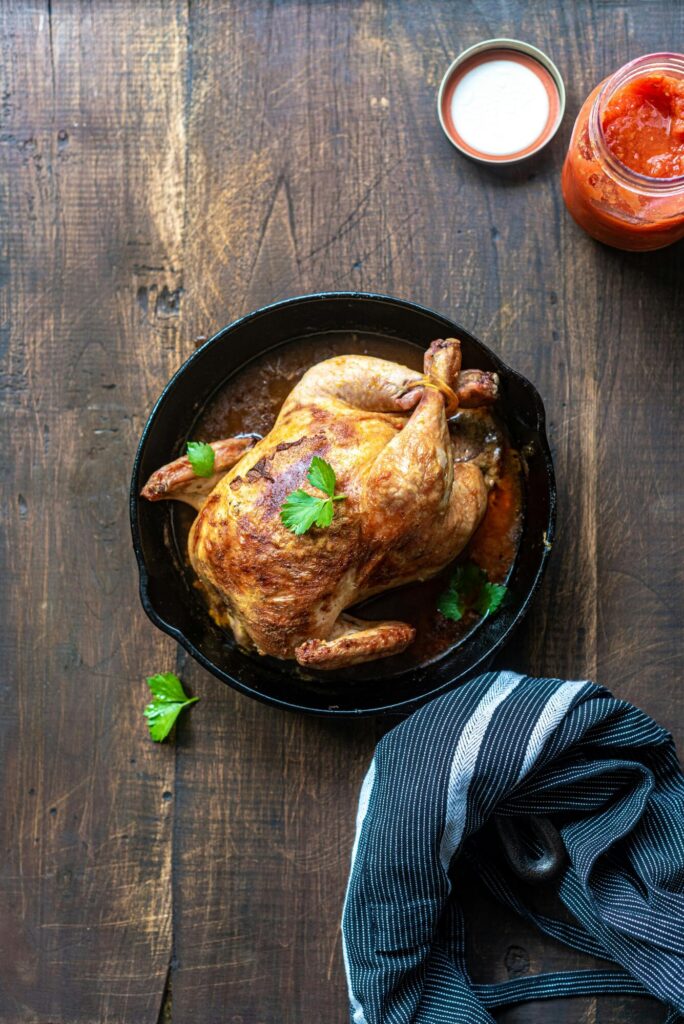If you haven’t experienced deep-frying a turkey, prepare for a game-changer. But it can also be the most intimidating part of the feast. Worries about dry meat, uneven cooking, or burnt skin can make getting the perfect golden turkey seem challenging.
The good news? There’s more than one way to cook an amazing turkey. Whether you’re a traditional oven-roaster or an adventurous fryer, the key is to choose a method that suits your style, tools, and taste buds.
Let’s explore the top turkey cooking methods that guarantee juicy meat and big flavorful feast, no stress required.
Oven Roasting: The Classic Choice
You can’t go wrong with a classic roast. It’s the traditional method for a reason-it delivers that picture-perfect bird with crispy skin and tender meat.
To get started, preheat your oven to 325°F. Place the turkey breast side up on a rack inside a roasting pan. Before cooking, pat the skin dry with paper towels and season it well with salt, pepper, and your favorite herbs or spice blends.
The secret to a juicy roast turkey is moisture control. Basting every 45 minutes helps, but don’t overdo it or you’ll cool the oven too often. Roast the bird uncovered for the first 2 hours, then tent it loosely with foil to prevent over-browning.
Pro tip: Let the turkey rest for at least 30 minutes after roasting. This allows the juices to settle, keeping every slice moist and flavorful.
Deep Frying: Crispy on the Outside, Juicy Inside
If you’ve never tried deep-frying a turkey, get ready for a game-changer. This method locks in moisture and creates an incredibly crispy skin in a fraction of the cooking time.
You’ll need a propane fryer, a sturdy stand, and plenty of peanut or canola oil. Heat the oil to 350°F, then slowly lower the fully thawed, dry turkey into the pot. Cook for about 3-4 minutes per pound.
The result? Golden perfection with that irresistible crunch. Just make sure to fry outdoors on a flat, open surface and keep a fire extinguisher nearby.
Safety first-never fry a frozen or wet bird! Many food enthusiasts claim that once you try a deep-fried turkey, you’ll prefer it to an oven-roasted one.
Smoking: Slow, Steady, and Flavor-Packed
For a turkey that tastes like it came straight from a backyard barbecue dream, smoking is the way to go. This slow-cooking method infuses the bird with deep, woodsy flavor while keeping the meat tender.
You can use a pellet smoker, an electric smoker, or even a charcoal grill. Aim for a temperature of 225-250°F and use wood chips like apple, hickory, or cherry for a smoky aroma. Plan on about 30-40 minutes of smoking per pound.
To make the process easier, brine the turkey beforehand to keep it moist. The result is a bird that’s juicy, slightly smoky, and guaranteed to impress everyone at the table.
Spatchcocking: Fast and Even Cooking
If you’re short on time but still want that oven-roasted goodness, spatchcocking (butterflying) your turkey is the ultimate hack.
This method removes the backbone to let the turkey lay flat. It cooks more evenly and in nearly half the time of a traditional roast. Plus, the entire surface gets crispy and golden.
Lay your bird breast-side down and cut out the backbone using kitchen shears. Flip it over, press down to flatten it, and season generously. Roast at 425°F until the skin is crisp and the internal temperature hits 165°F.
Grilling: Outdoor Flavor With Less Fuss
Why restrict the turkey to the oven when you can take the party outside? Grilling gives your bird a smoky, charred flavor and frees up precious oven space.
Set up your grill for indirect cooking (heat on one side, turkey on the other) and aim for a steady 350°F. If using a gas grill, keep one burner off and place the bird over that side. For charcoal, pile the coals on one side and put a drip pan under the turkey.
Baste occasionally with melted butter or herb oil for extra flavor. The result is a golden-brown turkey with a subtle smoky edge that screams backyard holiday vibes.
Sous Vide: Precision Cooking for Perfect Texture
Sous vide might sound fancy, but it’s actually one of the easiest ways to guarantee a moist and evenly cooked turkey. Using a water bath heated to a precise temperature, this method ensures the meat never overcooks.
Seal seasoned turkey parts (like breast and legs) in vacuum bags and cook them in a sous vide bath, around 150°F for breast meat or 165°F for dark meat. Once done, quickly sear the skin in a hot pan or under a broiler to add that crispy finish.
Air Frying: The Modern Shortcut
For smaller gatherings or quick weeknight meals, air frying a turkey breast or small bird is a surprisingly easy option. It gives you the crispiness of deep-frying without all the oil or mess.
Set your air fryer to 350°F and cook the turkey for about 10 minutes per pound. Always check the internal temperature-165°F means it’s ready to rest.
The best part? Cleanup is a breeze. This method is ideal when you want big flavor in less time and without heating up the whole kitchen.
Bonus: The Key to Flavor Lies in Preparation
No matter which method you choose, your prep work makes all the difference. Proper seasoning, brining, and resting can turn an average turkey into a showstopper.
Try dry brining overnight by rubbing salt and spices directly onto the skin. Or go for a wet brine using a mix of water, salt, sugar, and aromatics. Both options help lock in moisture and boost flavor from the inside out.
Want to master more ways to cook a whole turkey? Check out this ultimate turkey prep guide for expert techniques and seasoning tips that bring out the best in every bird.
Juicy and Flavorful Feast: The Grand Turkey Takeaway
Whether you roast, fry, smoke, or grill, the best method is the one that suits your kitchen and flavor style. Love tradition? Roast it. Crave crunch? Fry it. Want smoky depth or precise texture? Smoke or sous vide it.
With the right prep and attention to temperature, you’ll serve a juicy, flavorful feast turkey that steals the spotlight.
Is this article helpful? Keep reading our blog for more.







